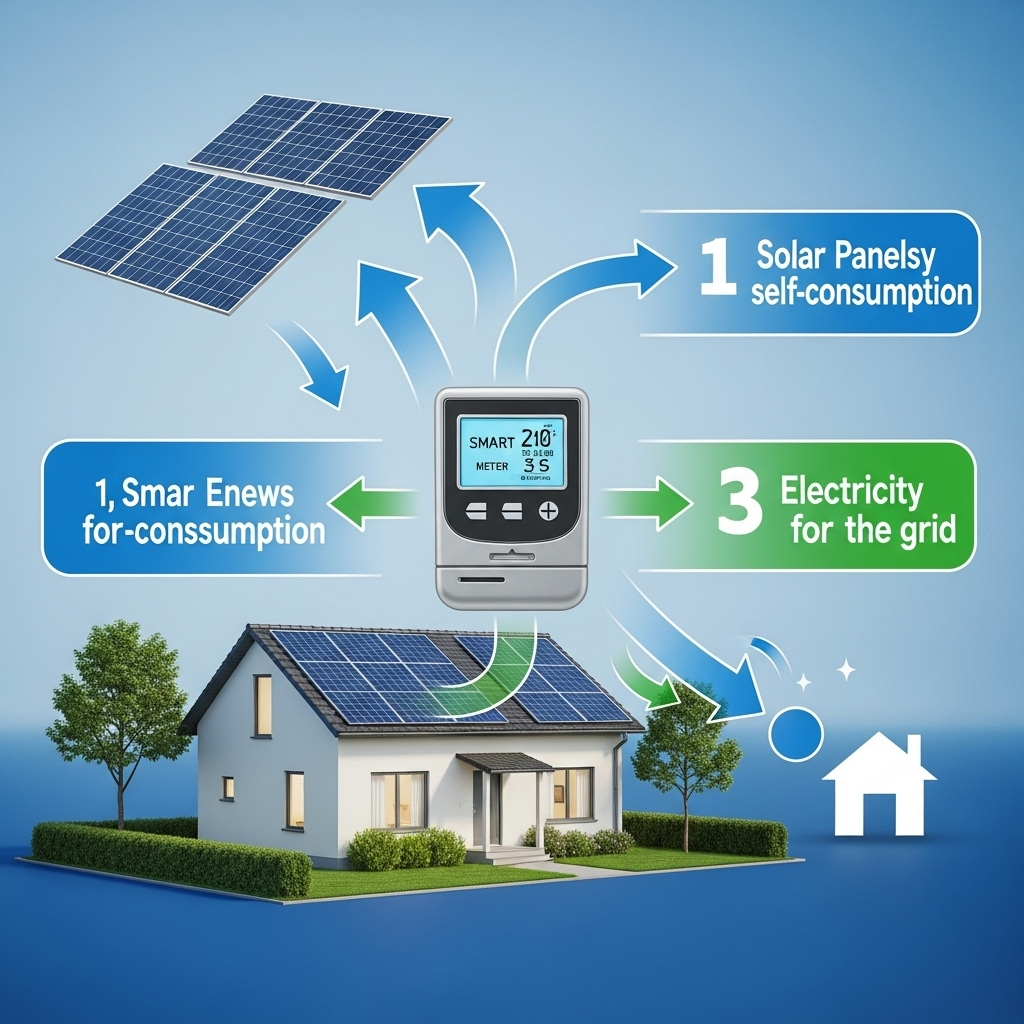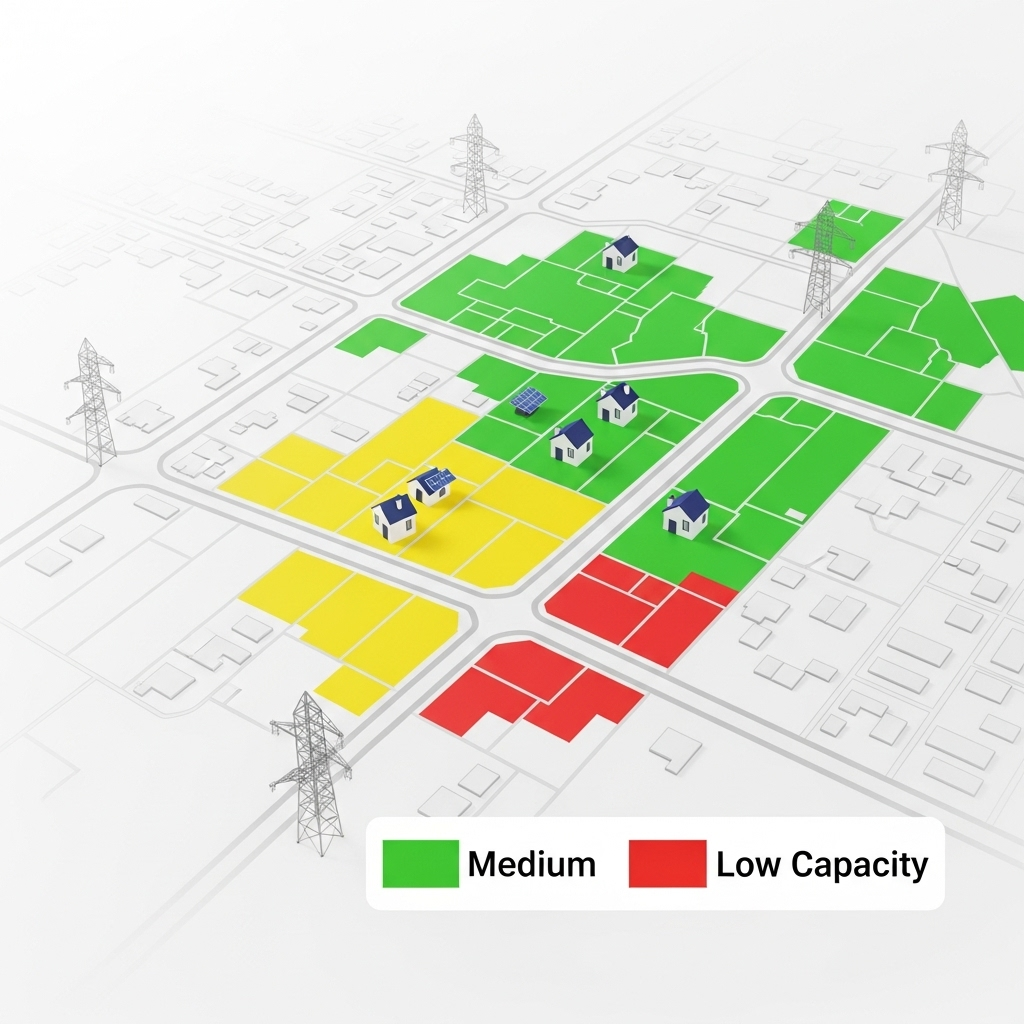Connecting a solar and energy storage system (PV-ESS) to the grid can feel complex. You are ready to generate your own clean power, but then you encounter terms like 'export controls' and 'interconnection limitations'. These regulations can seem like roadblocks, creating confusion and raising questions about the value of your investment. This article separates myth from reality, clarifying what PV-ESS export limitations are and how the right technology turns them into an advantage for you.
Understanding Export Controls in PV-ESS Systems
Grid connection rules are not designed to penalize solar owners. Instead, they are a necessary part of maintaining a safe and stable electrical grid for everyone. As more renewable energy sources come online, utilities must manage how this power flows through their infrastructure.
What Are Export Controls?
Export controls are technical rules set by a utility that manage the amount of excess electricity your PV-ESS system can send, or 'export', to the public grid. These controls can range from allowing no export at all (zero-export) to limiting the amount of power based on time of day or current grid conditions. They are a core component of modern grid connection rules for distributed energy resources (DERs).
Why Do These Controls Exist?
The primary reason for export controls is grid stability. Local circuits have a finite capacity to handle power. An uncontrolled surge of solar energy from many homes in one neighborhood could overload transformers or cause voltage fluctuations, impacting power quality. According to the International Energy Agency's report, System Integration of Renewables, appropriate technical grid connection rules are critical to ensure that renewable energy plants do not negatively affect the local reliability of electricity supply. These rules help system operators manage the grid as the mix of energy sources changes.
Types of Export Control Schemes
While specific policies vary, most export controls fall into a few categories:
- Zero-Export: Your system is configured to never send power back to the grid. All excess energy must be consumed on-site or stored in your battery.
- Export Limiting: Your system can export power, but only up to a certain kilowatt (kW) limit set by the utility. This prevents your system from overwhelming local grid infrastructure.
- Dynamic or Scheduled Export: Advanced systems can adjust their export levels based on signals from the utility, allowing for more flexibility while still protecting the grid.
Debunking Common Myths About Export Limitations
Misconceptions about export controls can discourage homeowners from adopting solar and storage. Let's clear up some of the most common myths with factual explanations.
Myth 1: 'Export Controls Mean I'm Wasting My Solar Energy'
Reality: This is where an energy storage system (ESS) becomes invaluable. Without a battery, any solar power your panels produce that you don't use immediately is lost in a zero-export scenario. With a battery, that excess energy is captured and stored. You can then use this stored, free energy in the evening when your panels are no longer producing, drastically reducing your reliance on the grid. This strategy, known as self-consumption, maximizes the value of every kilowatt-hour you generate.
Myth 2: 'Zero-Export Is the Same as Being Off-Grid'
Reality: These are two very different setups. A zero-export system is still connected to the grid. This connection provides a reliable backup source of power if your solar production is low and your battery is depleted. You benefit from grid stability without needing an oversized battery bank to cover every possible contingency. An off-grid system, by contrast, is completely physically disconnected from the utility, making you solely responsible for 100% of your energy needs.
Myth 3: 'Any Inverter Can Handle Export Controls'
Reality: This is a critical misunderstanding. Compliance with export controls requires a smart inverter or a hybrid inverter with specific control capabilities. Standard, older inverters are designed simply to convert DC to AC power and cannot actively manage power flow. A report from IRENA, Grid Codes for Renewable Powered Systems, highlights that modern grid codes require DERs to have remote control capabilities. This functionality is built into smart inverters, allowing them to receive signals or be programmed to limit active power export, ensuring compliance with utility rules.
The Reality of Implementing Export Controls
Instead of viewing export controls as a barrier, it's more accurate to see them as a parameter within which a modern PV-ESS system is designed to operate. With the right equipment, these rules are easy to manage.
The Role of Smart Inverters and System Configuration
A smart inverter is the brain of a grid-tied PV-ESS. It constantly monitors your home's energy consumption, solar production, and battery state of charge. When it detects that solar production exceeds your home's needs and the battery is full, it will automatically 'curtail' or ramp down the power from the solar panels to match the on-site load, thus preventing export. This process is seamless and automatic. The technical standard IEEE 1547-2018, a key benchmark for DERs in the United States, specifies that all compliant devices must have the capability to respond to signals to limit active power, underscoring the importance of this technology.
Pairing PV with Storage for Maximum Benefit
A PV-ESS system turns an export limitation from a restriction into a financial opportunity. By storing excess energy, you shift your consumption away from expensive grid power. This is especially beneficial in areas with Time-of-Use (TOU) electricity rates, where power is most expensive in the late afternoon and evening. You can use your stored solar energy during these peak-price hours for maximum savings.
| Scenario | Excess Solar Energy Action | Evening Power Source | Grid Dependency | Bill Savings Mechanism |
|---|---|---|---|---|
| PV-Only with Net Metering | Exported to the grid for a credit | Grid (at retail rate) | High | Credits offsetting grid usage |
| PV-ESS with Export Control | Stored in the battery | Battery (free solar energy) | Low | Maximized self-consumption, avoiding grid purchases |
Navigating Local Grid Connection Rules
It is vital to remember that grid connection rules are not universal. They vary significantly between states, counties, and even individual utility companies. Before purchasing a system, you or your installer must consult with the local utility to understand their specific interconnection requirements, including any export limitations. Some utilities provide 'hosting capacity maps' that show which circuits can easily accommodate new solar installations, which can streamline the approval process.
Looking Ahead: Your Role in the Future Grid
PV-ESS interconnection rules are evolving. As grids become more decentralized, systems like yours with smart inverters and batteries are no longer just passive power generators. They are becoming active participants that can help stabilize the grid. Export controls are a part of this transition, ensuring that the shift to renewable energy happens smoothly and reliably. By pairing solar with a battery storage system, you not only gain energy independence and reduce your electricity bills but also adopt a future-proof technology that works in harmony with the modern grid.
Frequently Asked Questions
What happens to my excess solar power in a zero-export system?
In a properly configured PV-ESS, excess solar power is used to charge your battery storage system. Once the battery is full, the smart inverter will automatically reduce the solar panel's production to precisely match your home's real-time energy needs, preventing any export to the grid. This ensures you store and use as much of your own generated energy as possible.
Do I still get a utility bill with an export-limited system?
Yes, you will likely still have a utility bill, though it should be significantly lower. You may need to draw power from the grid during extended periods of bad weather or if your energy usage at night exceeds what your battery has stored. The connection also typically involves a small monthly fee for service availability.
Can I switch from a zero-export to a net metering agreement later?
This depends entirely on your local utility's rules and the grid conditions in your area. In some cases, if the utility upgrades the local infrastructure or if grid capacity becomes available, you might be able to apply for a new interconnection agreement. However, this is not guaranteed. It is crucial to consult your utility and installer about long-term possibilities before installation.
Is a PV-ESS with export control more expensive?
The initial investment for a PV-ESS is higher than a solar-only system because of the battery cost. However, it provides greater energy resilience during outages and maximizes the financial benefit of your solar panels, especially in areas with low net metering compensation or high electricity rates. To understand the return on investment, it is important to analyze your system's potential performance and savings, as detailed in this ultimate reference for solar and storage performance.
Disclaimer: The information provided in this article is for educational purposes only. It does not constitute financial or legal advice. Grid connection rules and regulations vary widely and are subject to change. Please consult with a qualified solar installer and your local utility for guidance specific to your project.





Leave a comment
All comments are moderated before being published.
This site is protected by hCaptcha and the hCaptcha Privacy Policy and Terms of Service apply.